https://lefaucheux.com/eugene-lefaucheux-advancing-the-legacy/ Eugène Lefaucheux: Advancing the Legacy The Model 1854 Revolver: A Milestone in Firearms Innovation 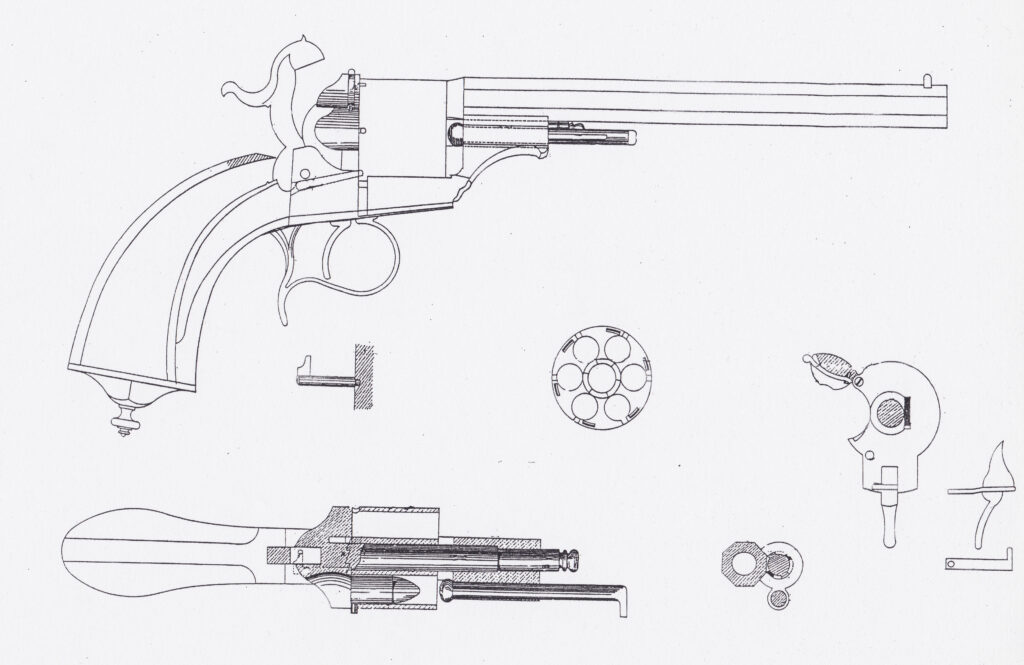 On April 15, 1854, Eugène Lefaucheux laid the cornerstone of his enduring legacy by filing patent number 019380 for a revolver, a design that has stood the test of time. Later that year, on November 4, he refined his design with an amendment to the original patent, paving the way for initial testing. Even before this amendment, his 1854 revolver had already been entered into a competition against Colt and Adams on September 16, as part of the French Navy’s initiative to update its arsenal.
On April 15, 1854, Eugène Lefaucheux laid the cornerstone of his enduring legacy by filing patent number 019380 for a revolver, a design that has stood the test of time. Later that year, on November 4, he refined his design with an amendment to the original patent, paving the way for initial testing. Even before this amendment, his 1854 revolver had already been entered into a competition against Colt and Adams on September 16, as part of the French Navy’s initiative to update its arsenal. 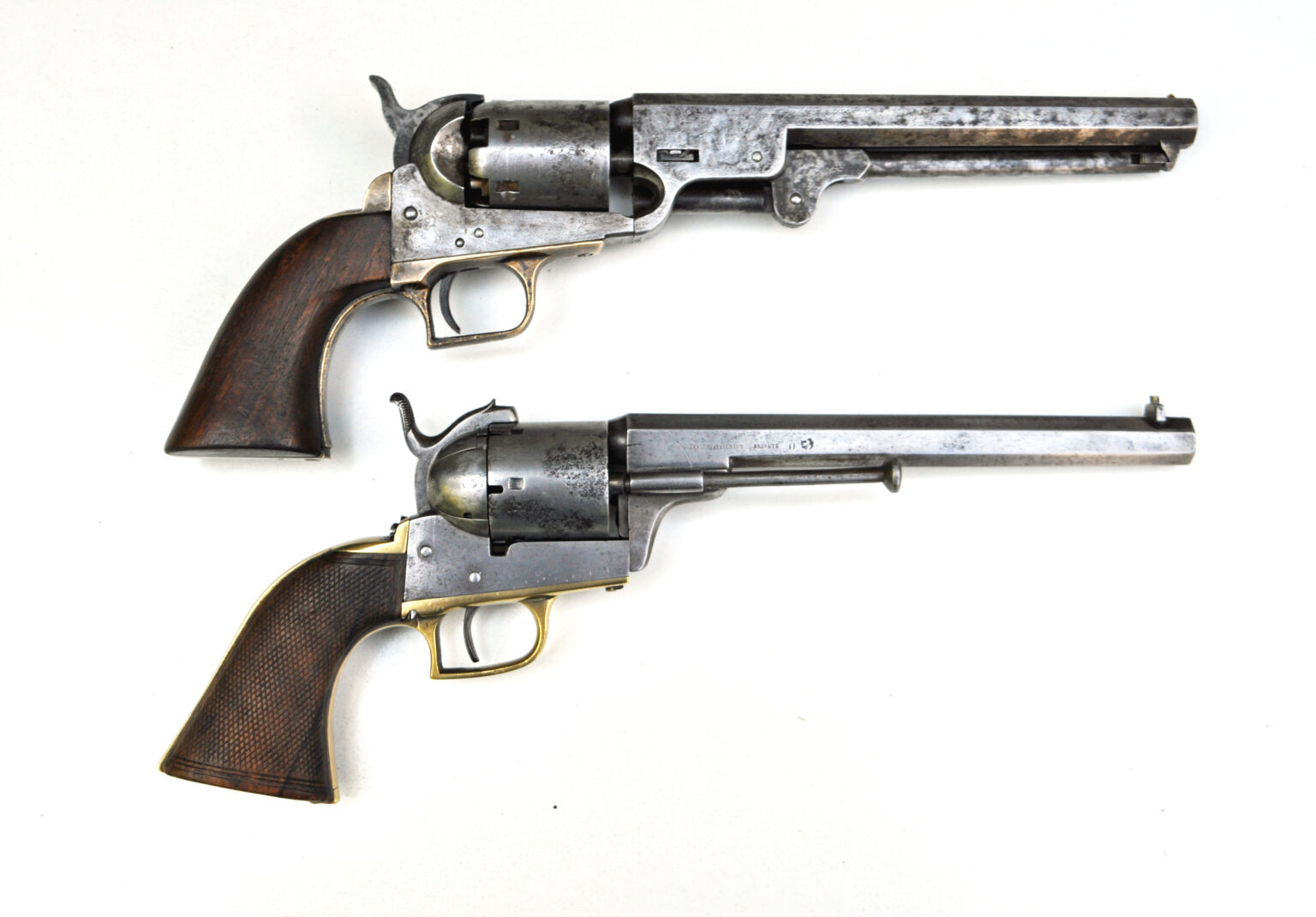
LF0 – The first prototype of the Lefaucheux Model 1854 Revolver built on a modified Colt Brevete frame
In response to the growing business and the need for organized production, Lefaucheux, along with partners Bigot and Binard, founded “E. Lefaucheux et Cie.” on January 14, 1855. The company’s headquarters were set up at the residence of Eugène’s mother at 37 rue Vivienne. On March 24, 1855, a second company was established to take over from the first, with the inclusion of Mr. Henry Fernandez Patto, a trader from Bayonne, who opened up the Iberian market. As business expanded, the premises at 37 rue Vivienne became insufficient, prompting the leasing of additional workshops at 9 and 9 bis rue Lafayette from Mr. Binard to accommodate the increasing demand.
Eugène secured his initial contract with the Navy on January 2, 1856, agreeing to supply six model 54 revolvers, half of them with rifled barrels and the rest with smooth barrels. Later that year, on September 5, 1856, he achieved another milestone by patenting the “small pistol,” notable for its double-action swinging mechanism, which turned into a commercial triumph under Patent 29055.
The apex of recognition came when he signed and partially sold his April 15, 1854, patent to the French Navy on May 8, 1858. Subsequently, the design and development of the “58 de Marine” moved beyond the direct control of our inventor. Meanwhile, the Lafayette Street factory was producing the “1854 civilian with a military vocation,” very close to the standard model, which would become Eugène’s flagship product and secure his worldwide fame and fortune. Following the Navy’s approval, production of 1,500 revolvers commenced at the Saint Etienne Manufacture. “E. Lefaucheux et Cie.” received its first bonus, with 250 of these weapons reserved for the Indochina Division and shipped on the Darne in early 1859.
Strategic Expansion and Challenges in Liège
Eugène Lefaucheux’s fascination with the gunsmithing expertise in Liège led him to establish a branch there in December 1864, acquiring a property at 13 quai Fragnée on March 2, 1865. This strategic move aimed to leverage the region’s dense population of skilled gunsmiths. However, challenges soon emerged. The commercial court of the Seine dissolved “E. Lefaucheux et Cie.” on July 3, 1867, leading to its liquidation and subsequent auction on August 31, 1867. Despite these setbacks, Eugène emerged as the sole owner and operator of both the Paris and Liège factories.
The production at Maison E. Lefaucheux found new life with the French army’s adoption of the Chassepot rifle in 1866, which strained state factories and opened opportunities for Eugène. In the fall of 1867, he secured a contract to convert 40,000 Dragoon rifles into tabatière rifles. This contract renewal came amidst changes in military technology, including a shift from the pinfire system to central percussion, which led to the development of the “model 1870 revolver.” This new model was contracted by the Ministry of the Navy on February 10, 1870, for 4000 units at a price of 40 francs each, but the contract’s fulfillment was delayed until 1872 due to the Franco-Prussian War and the Paris Commune.
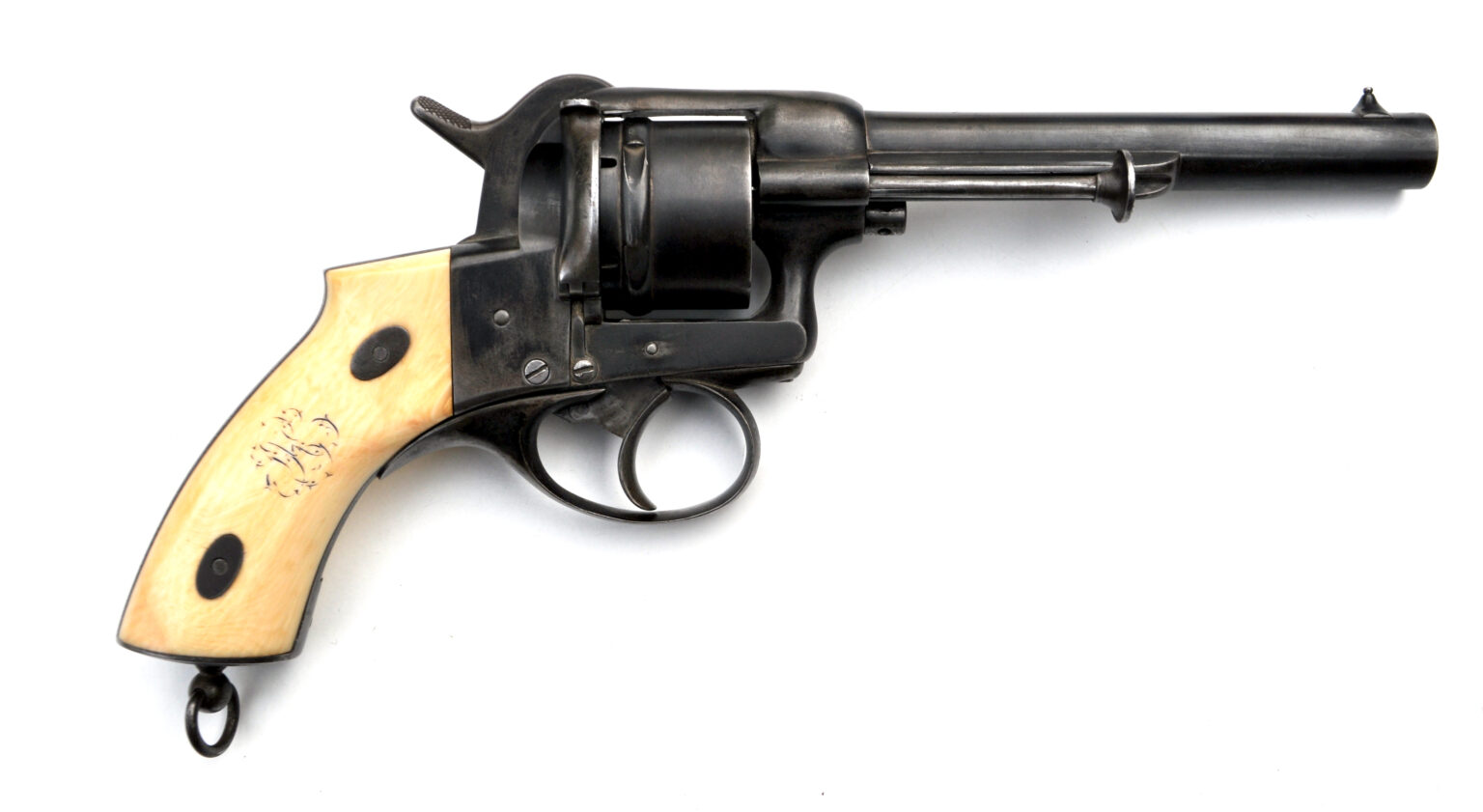 Model 1868 pinfireAs the war unfolded in 1870, Eugène ensured the safety of his family by sending them to Vevey, Switzerland. He himself traveled to England and Belgium under a government mandate to procure weapons. Facing language barriers and unable to conclude contracts in England, he returned to Belgium. By January 1871, as his family rejoined him in Liège, Eugène, at 39 years old, began facing significant health issues, signaling a pivotal shift in both his personal and professional life.
Model 1868 pinfireAs the war unfolded in 1870, Eugène ensured the safety of his family by sending them to Vevey, Switzerland. He himself traveled to England and Belgium under a government mandate to procure weapons. Facing language barriers and unable to conclude contracts in England, he returned to Belgium. By January 1871, as his family rejoined him in Liège, Eugène, at 39 years old, began facing significant health issues, signaling a pivotal shift in both his personal and professional life. 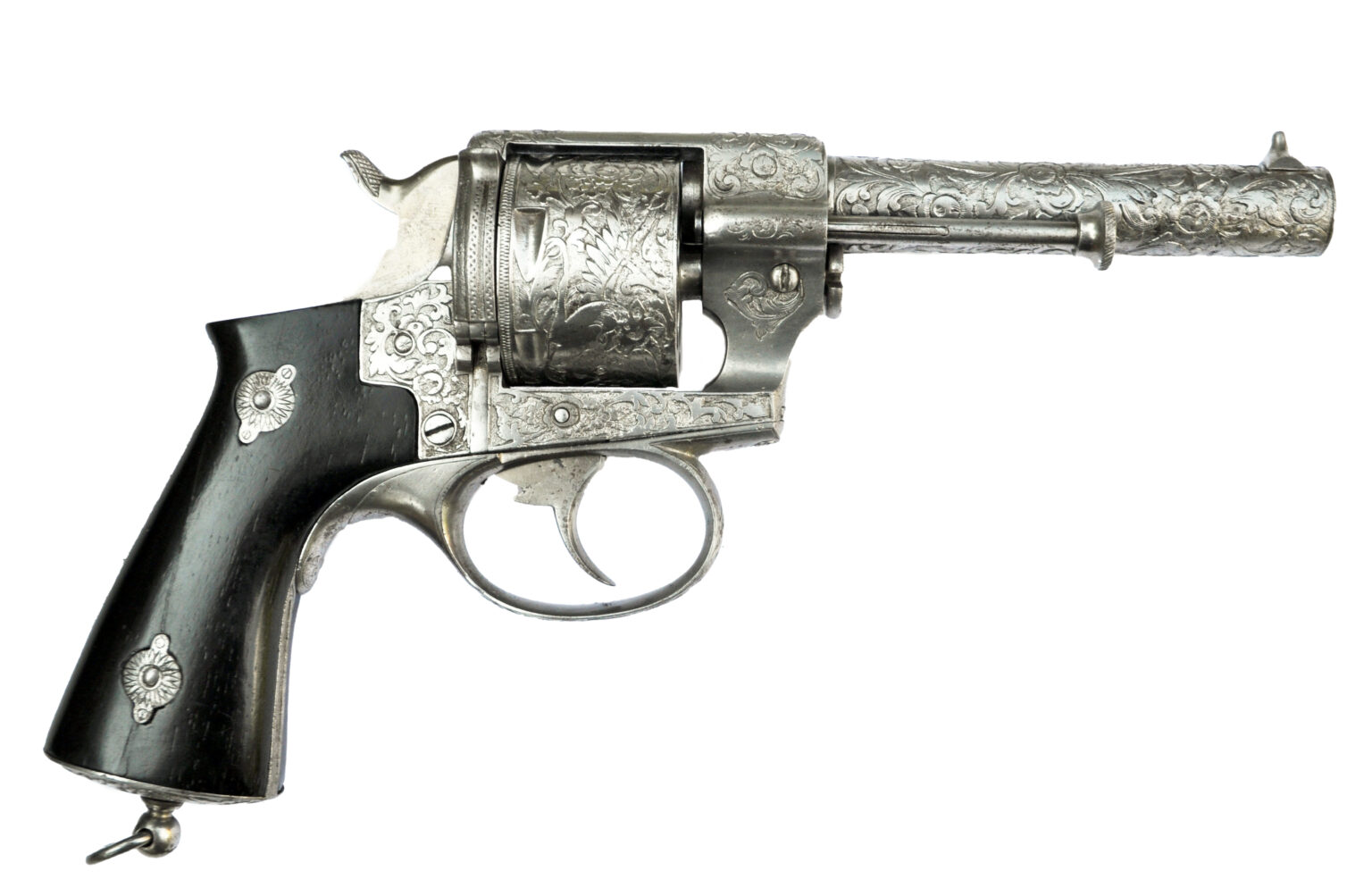 Model 1870 civilian From 1873, production at Lefaucheux was significantly reduced, culminating in the “70” model, his last handgun. Facing intense competition and the Army’s adoption of the Chamelot-Delvigne revolver, Eugène decided to sell the Liège factory. The sale, managed by Gustave Bronne, was finalized on October 9, 1873, to Mr. Dacier, although Eugène retained his right to the Lefaucheux stamp. In 1874, he began decentralizing his operations by purchasing the old factory of Trémerolles near his château in Bruyères le Châtel. The Paris shop moved from 194 rue Lafayette to 32 rue Notre Dame des Victoires in a building owned by Jules Gévelot, with a lease signed on June 15, 1875. As his patents entered the public domain, this marked a gradual end to his industrial activities.
Model 1870 civilian From 1873, production at Lefaucheux was significantly reduced, culminating in the “70” model, his last handgun. Facing intense competition and the Army’s adoption of the Chamelot-Delvigne revolver, Eugène decided to sell the Liège factory. The sale, managed by Gustave Bronne, was finalized on October 9, 1873, to Mr. Dacier, although Eugène retained his right to the Lefaucheux stamp. In 1874, he began decentralizing his operations by purchasing the old factory of Trémerolles near his château in Bruyères le Châtel. The Paris shop moved from 194 rue Lafayette to 32 rue Notre Dame des Victoires in a building owned by Jules Gévelot, with a lease signed on June 15, 1875. As his patents entered the public domain, this marked a gradual end to his industrial activities. a rare version of a Lefaucheux revolver also because it features a dorsal rib.
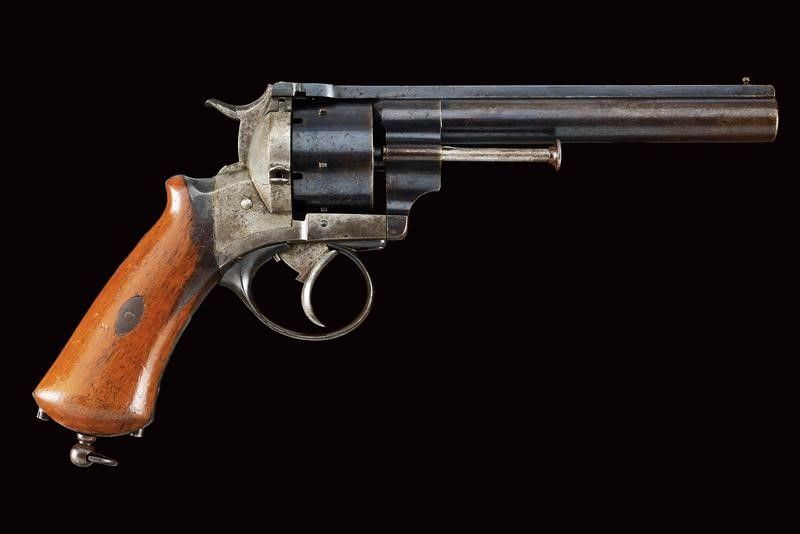 1860-70 provenance: France, Round, rifled, 11 mm cal barrel, provided with high rib with sight and signed 'E. Lefaucheux B.te a Paris'
1860-70 provenance: France, Round, rifled, 11 mm cal barrel, provided with high rib with sight and signed 'E. Lefaucheux B.te a Paris'
Rare version of a Lefaucheux revolver featuring a dorsal rib. 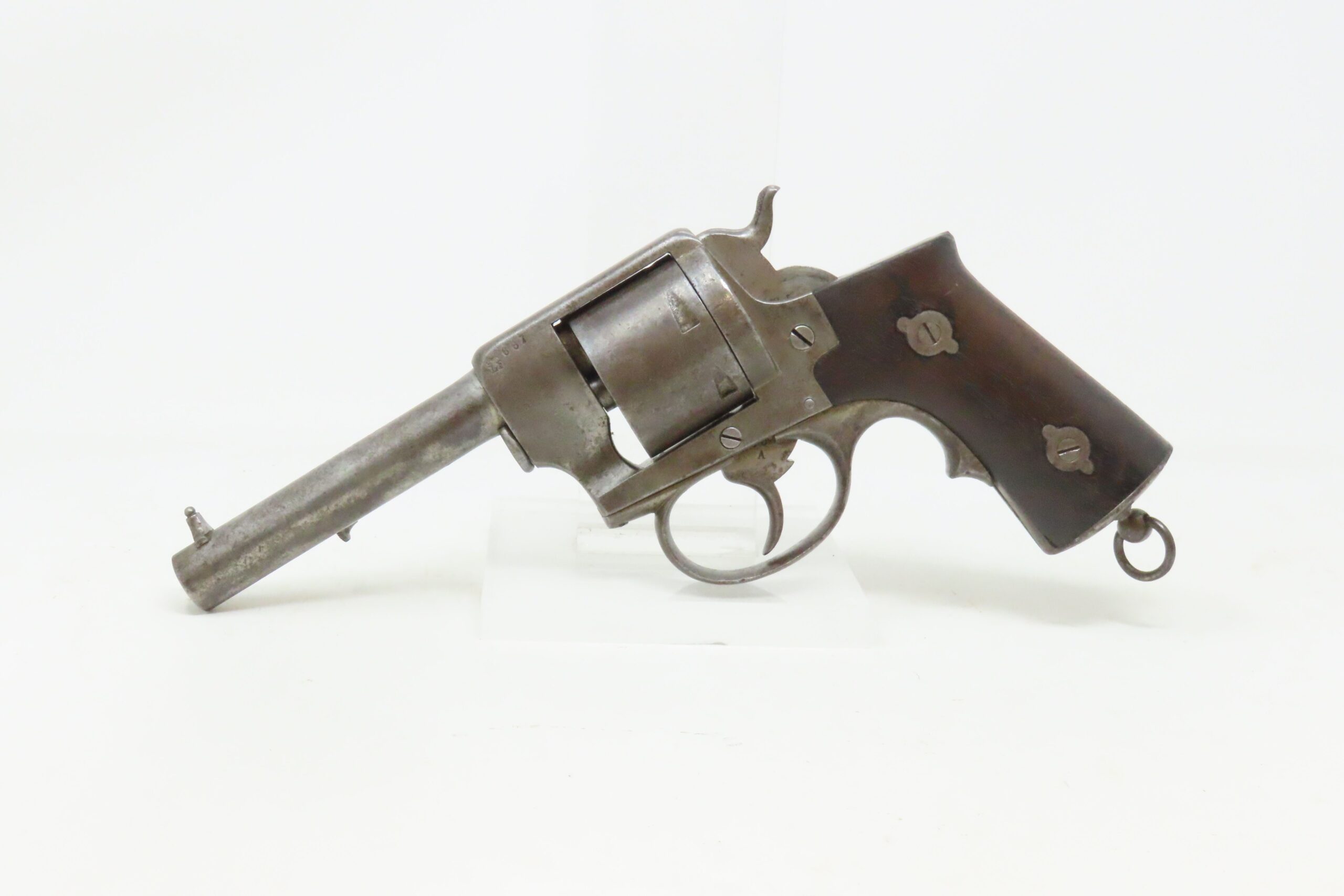
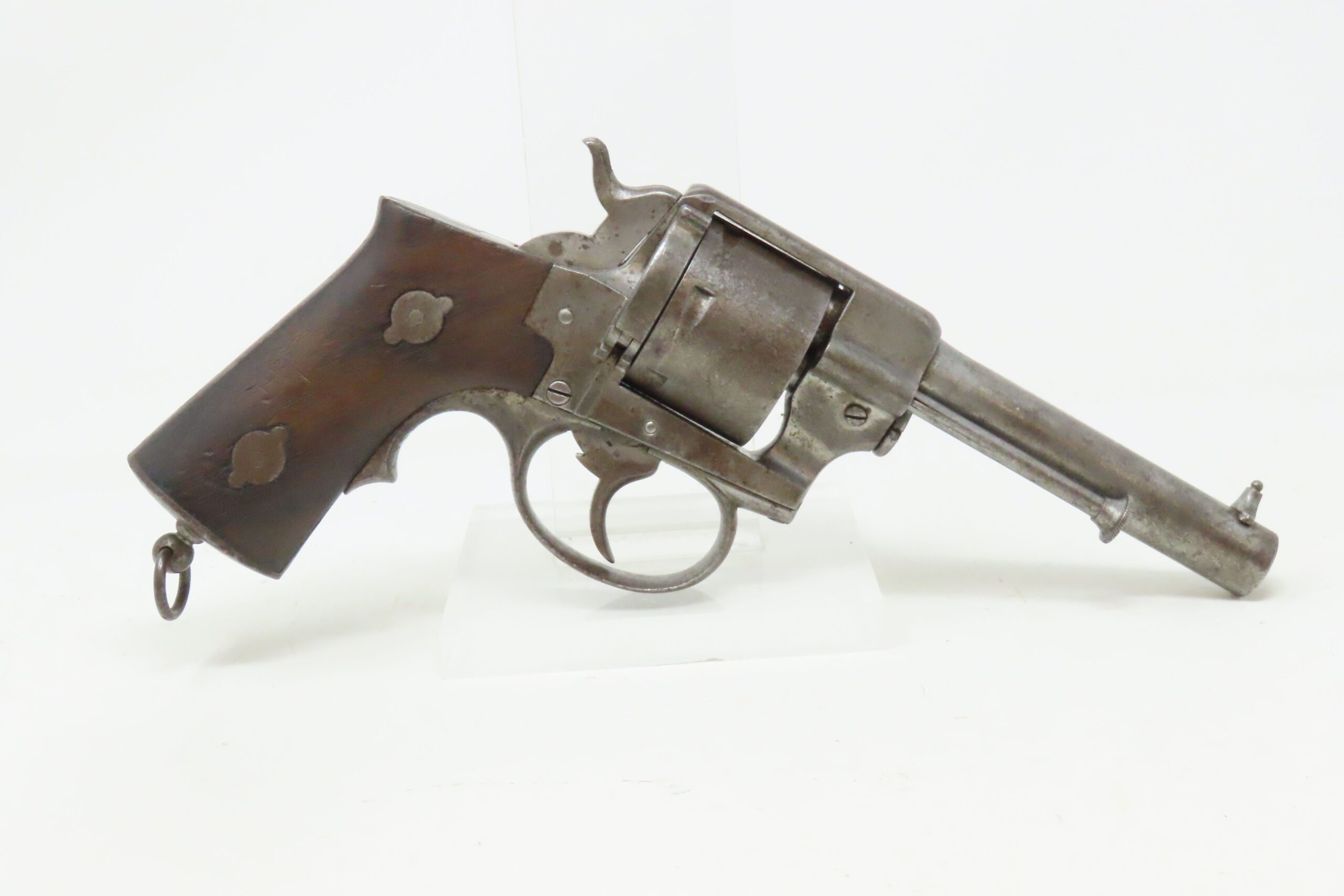
LEFAUCHEUX Antique Model 1870 NAVY 11mm 6-Shot CENTERFIRE Revolver One of 4,000 Contracted by the FRENCH NAVY